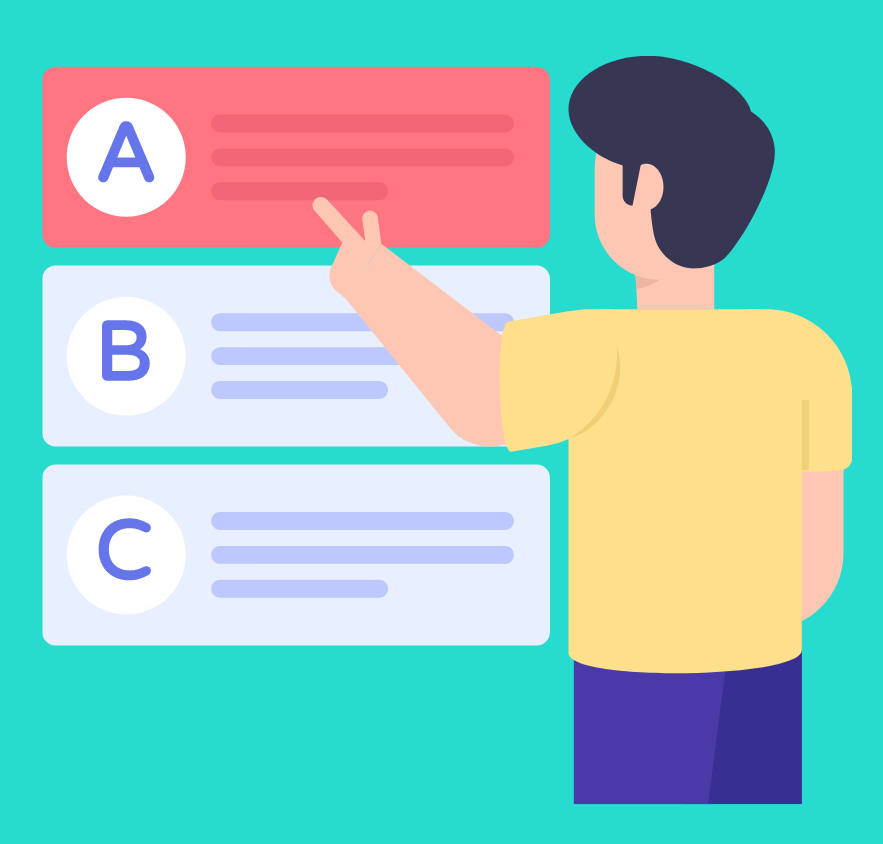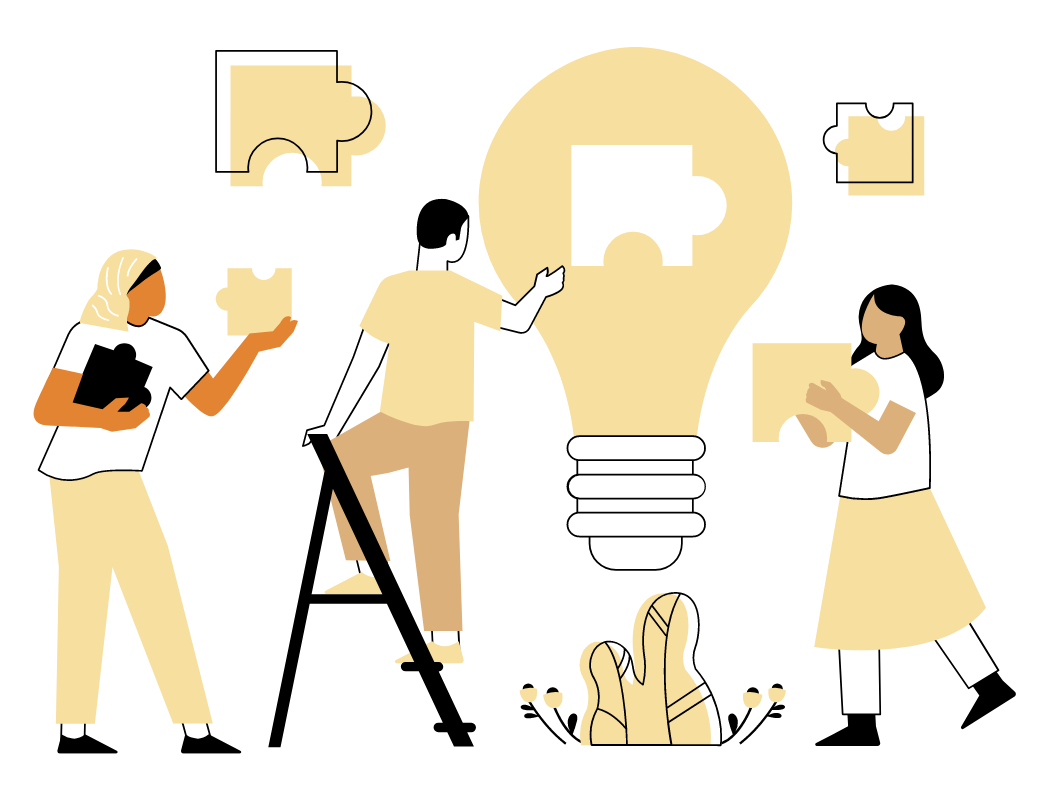OFF-THE-SHELF eLEARNING
Upload our pre-designed eLearning modules straight into your own Learning Management System

To add our pre-designed eLearning to your own course catalogue
We’ve done the heavy lifting and developed the most sought after professional development into ready-to-go eLearning modules that your team will love, not swear at because it’s:
- Memorable: quick, easy, interactive and on demand
- Micro: short, sharp and less than 20 minutes long
- Accessible: learning that works for all abilities
- SCORM and mobile compliant: for anywhere anytime learning
- Meaningful: immediately applicable on the job
- Customisable: with options for branding and tweaking to make it your own.
All you need to do is select the best courses for your team.
Soft Skills | Leadership | Wellbeing | Diversity

WHY ELEARNING
Can your organisation afford not to join the trend?
Interactivity
Learners interact with simulations, quizzes, games, graphics, animations and videos, and flip, drag and drop items around the screen while learning. Instead of reading pages of text or sitting through a presentation, learners can be engaged in the material, which increases retention and engagement.
eLearning is scalable
You can roll it out to as many learners as you need, and it is a one-time investment that does not require repetition by a facilitator.
On Demand
Learners can access content anywhere, anytime and on demand. Today’s learners are engaged in short, mobile, self-paced, and customised content available at their fingertips as many times as they need without having to worry about attending a scheduled zoom or classroom session.
Full Quality Control
In face-to-face or zoom sessions, every instructor has their own method of delivering. Each varies in approach and style and is susceptible to mistakes. You can eliminate these issues with e-learning. Online learning provides consistent and standarised learning every time.
Save time & money
Factoring in loss of productivity, paying for an facilitator, travel time, time away from work to attend sessions and the cost of training materials like workbooks, it is easy to see how eLearning is more cost-effective compared to traditional training methods.
Learner retention and engagement
The many advantages of eLearning can be argued in a number of ways, but the main advantages simply boil down to two components: retention and engagement. Learners who are engaged and excited about the course material, who actually want to experience the concepts through gamification and interaction are more likely to retain the learning objectives
Sensory Engagment
eLearning engages a learner’s eyes, ears, and hands during a course, and enhances what could have been a lackluster experience. What’s more, simulations and skills uptake checks give users another chance to truly experience the training in a safe space before applying new skills on the job.
Continuous feedback
eLearning gives learners permission to explore, test and yes, even fail as part of the learning process. Continuous, in-the-moment feedback helps learners’ course-correct and become more proficient in the safest way possible, keeping the learning path moving forward in a positive way.

Interactivity
Learners interact with simulations, quizzes, games, graphics, animations and videos, and flip, drag and drop items around the screen while learning. Instead of reading pages of text or sitting through a presentation, learners can be engaged in the material, which increases retention and engagement.
Full Quality Control
In face-to-face or zoom sessions, every instructor has their own method of delivering. Each varies in approach and style and is susceptible to mistakes. You can eliminate these issues with e-learning. Online learning provides consistent and standarised learning every time.
Sensory Engagment
eLearning engages a learner’s eyes, ears, and hands during a course, and enhances what could have been a lackluster experience. What’s more, simulations and skills uptake checks give users another chance to truly experience the training in a safe space before applying new skills on the job.
eLearning is scalable
You can roll it out to as many learners as you need, and it is a one-time investment that does not require repetition by a facilitator.
Save time & money
Factoring in loss of productivity, paying for an facilitator, travel time, time away from work to attend sessions and the cost of training materials like workbooks, it is easy to see how eLearning is more cost-effective compared to traditional training methods.
Continuous feedback
eLearning gives learners permission to explore, test and yes, even fail as part of the learning process. Continuous, in-the-moment feedback helps learners’ course-correct and become more proficient in the safest way possible, keeping the learning path moving forward in a positive way.
On Demand
Learners can access content anywhere, anytime and on demand. Today’s learners are engaged in short, mobile, self-paced, and customised content available at their fingertips as many times as they need without having to worry about attending a scheduled zoom or classroom session.
Learner retention and engagement
The many advantages of eLearning can be argued in a number of ways, but the main advantages simply boil down to two components: retention and engagement. Learners who are engaged and excited about the course material, who actually want to experience the concepts through gamification and interaction are more likely to retain the learning objectives

LEVELS OF DIGITAL INTERACTIVITY
A narrative approach
Basic
Is essentially a ‘telling’ approach. The skill lies in the storytelling and the conciseness of the content explaining the concepts and facts. Using Self-assessment questions to evoke interest and check understanding.

Very nice
Procedural eLearning
Intermediate
Often used in systems training, requires demonstrations, graduated tasks and practice opportunities. The skill lies in breaking down the procedure into ‘how to’ bite-size logical steps. It usually requires animation or video to demonstrate the process.

So much fun
Experimental learning
Advanced
Is about taking the learner on a journey of discovery as decisions are made. Useful for developing judgement and changing behaviour, gamification falls into this category. The skill lies in molding the content from right/wrong to shades of grey. Also, the multimedia programming (animation) can be extensive.

Next level learning
BUILDING THE FUTURE
Our approach to immersive learning experiences…

Evaluation
Evaluate if the learning is effective, make changes and cycle back to the Analysis phase
Implementation
Launch your learning product to your audiance
Development
We bring your learning experience to life by building your end product
Design
In consultation with you, we design the best possible learning experience
Analysis
First, we analyse your situation to understand the gaps you need to fill

To add our pre-designed eLearning to your own course catalogue
